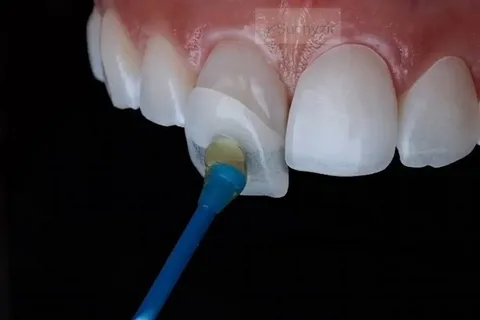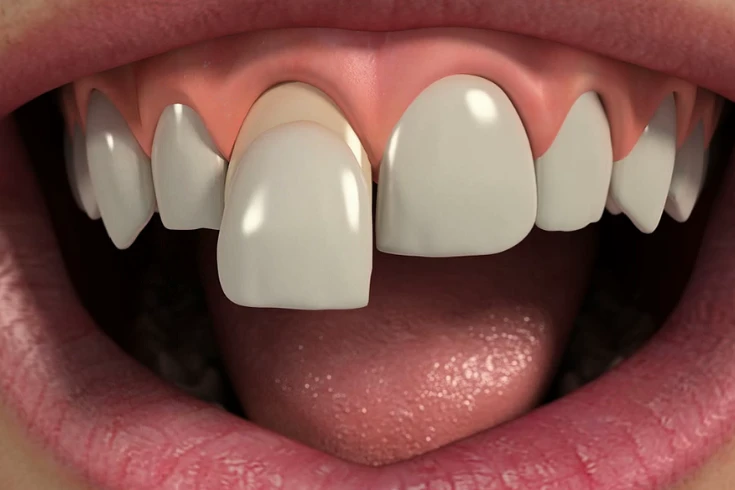Regarding orthodontic treatments, ceramic braces offer a discreet and effective solution for achieving a beautifully aligned smile. Unlike traditional metal braces, ceramic braces blend in with your teeth, making them a popular choice for those who want to straighten their teeth without drawing too much attention. In this comprehensive guide, we’ll cover everything you need to know about ceramic braces, from their benefits and drawbacks to the process and care involved.
What Are Ceramic Braces?
Ceramic braces are orthodontic appliances that use clear or tooth-colored brackets and wires to straighten teeth. The brackets are made from ceramic material that blends in with the natural color of your teeth, making them less noticeable than traditional metal braces.
How Ceramic Braces Work
Ceramic braces function the same way as metal braces. They use brackets and wires to gently pressure your teeth gently, gradually shifting them into their desired positions. The critical difference lies in the materials used: ceramic brackets are less conspicuous and designed to be more aesthetically pleasing.
The Process of Getting Ceramic Braces
Making ceramic braces involves several steps to ensure the braces are customized to your needs, and the treatment process goes smoothly. The steps involved in getting Ceramic Braces are explained below:
1. Initial consultation
In the initial consultation, you meet your orthodontist to discuss your dental needs and help the dentist if ceramic braces suit you.
The dentist will take X-rays, digital scans, and teeth impressions to check oral health. After determining whether you need ceramic braces, the orthodontist will discuss the cost and treatment procedure and schedule an appointment.
2. Diagnostic Records
This step aims to create a detailed treatment plan tailored to your dental structure.
Detailed X-rays of your teeth, jaws, and surrounding bone structures will be taken. Teeth are molded to create precise models to plan your treatment.
Intraoral and extraoral photographs may be taken to document the current state of your teeth and face.
3. Treatment Planning
Now, the dentist will design a customized treatment plan based on the diagnostic records.
The orthodontist analyzes the X-rays, impressions, and photographs to develop a detailed plan for aligning your teeth.
You’ll review the treatment plan, including the estimated duration, the type of ceramic braces to be used, and any other relevant information. After agreeing on all the plans and relevant topics, a date for placing the braces in your teeth will be set.
4. Braces Placement
This is the start of your treatment procedure. The orthodontist will attach the ceramic braces to your teeth and begin the alignment process.
Your teeth are cleaned and dried thoroughly. An adhesive is applied to the surface of each tooth where the brackets will be attached. Ceramic brackets are carefully placed on each tooth and bonded with a unique adhesive.
The orthodontist ensures that each bracket is positioned correctly. The orthodontic wire is threaded through the brackets and secured with small elastic bands or ligatures. The orthodontist checks the placement and adjusts the wire to ensure proper tension and alignment.
5. Follow-Up Visits
The objective of this step is to monitor progress and make necessary adjustments to the braces.
You’ll visit the orthodontist for adjustments periodically (usually every 4 to 6 weeks).
During these visits, the orthodontist tightens or changes the wires to continue moving your teeth into their desired positions. Any broken or loose brackets are repaired or replaced. The orthodontist will evaluate the progress of your treatment and make any necessary changes to the plan.
6. Oral Hygiene and Care:
Even if you visit the dentist in your follow-up, you must maintain oral health and ensure the braces work effectively.
You must follow a rigorous oral hygiene routine, brushing after every meal and flossing daily to prevent plaque buildup around the braces.
You should avoid sticky, complex, and sugary foods that can damage the braces or lead to cavities. If the braces cause irritation or sores in your mouth, orthodontic wax can be applied to the brackets to provide relief.
7. Completion of Treatment
To finalize the treatment, ensure your teeth remain in their new positions.
Once your teeth are correctly aligned, the ceramic braces are carefully removed. The orthodontist will clean any remaining adhesive from your teeth.
You’ll be fitted with a retainer to maintain your new teeth’s position and prevent them from shifting back. Retainers are typically worn full-time initially and then only at night.
8. Follow-Up and Maintenance
You have to monitor the stability of your teeth after the braces are removed.
You must perform Retention Visits to the dentist. Regular visits to the orthodontist will be scheduled to monitor your progress and ensure that your teeth remain aligned.
Retainer adjustments will be made if necessary to ensure continued comfort and effectiveness.
On the contrary, getting ceramic braces is a detailed process that involves several steps to ensure a successful outcome.
Each stage is crucial for achieving the best results, from the initial consultation to the final braces and retention phase removal. Working closely with your orthodontist and adhering to their instructions will help you achieve a beautifully aligned smile with ceramic braces.
Pros and Cons of Ceramic Braces
Pros
- Discreet Appearance: Ceramic braces are less noticeable than traditional metal braces, making them a more subtle option for those concerned about their appearance.
- Compatibility with Imaging Tests: Unlike metal braces, ceramic braces won’t interfere with imaging tests, such as X-rays and MRIs, ensuring more precise diagnostic results.
- Nickel-Free: Ceramic braces are ideal for individuals with nickel allergies. They are made from materials that do not contain nickel, reducing the risk of allergic reactions.
Cons
- Lower Durability: Ceramic braces are generally less durable than metal braces and may be more prone to breaking or chipping under pressure.
- Higher Cost: Due to the materials and technology involved, ceramic braces are typically more expensive than metal braces.
- Potential Gum Sensitivity: Some individuals may experience gum sensitivity or irritation with ceramic braces, especially in the initial adjustment period.
- Removal Challenges: Removing ceramic braces can be more complicated than removing metal braces, which might result in a longer treatment time for removing residual adhesive.
- Possible Tooth Enamel Damage: Ceramic braces can sometimes cause damage to tooth enamel if not properly managed, especially if brackets are bonded too tightly.
- Staining Risks: While ceramic braces are designed to resist staining, they may still discolor if exposed to substances like tobacco, coffee, tea, or red wine.
Proper care is essential for maintaining the effectiveness and appearance of your ceramic braces. This includes avoiding certain foods that can damage the braces, practicing good oral hygiene, and attending all scheduled appointments.
Tips for Caring for Ceramic Braces
- Avoid Staining Foods: While ceramic braces are stain-resistant, it’s still a good idea to limit the consumption of foods and drinks that can cause discoloration, such as coffee, tea, and red wine.
- Brush and Floss Regularly: Maintaining excellent oral hygiene is crucial to preventing plaque buildup and cleaning teeth and braces.
- Use Orthodontic Wax: If the braces are irritating your mouth, orthodontic wax can provide relief and help prevent sores.
Conclusion
Ceramic braces offer a fantastic alternative to traditional metal braces, providing a more discreet way to achieve a straighter smile. While they come with some drawbacks, such as higher cost and potential bulkiness, their benefits—mainly their subtle appearance—make them a popular choice among those seeking orthodontic treatment.
If you’re considering ceramic braces, consult an experienced orthodontist to determine if they fit your needs and start your journey toward a more confident smile.
For more information on ceramic braces and other orthodontic options, contact your local orthodontic office or visit our website.





